Manual Irrigation: A Comprehensive Guide
Manual irrigation‚ a time-honored practice‚ involves direct water application to crops using human effort․ Common techniques include watering cans and hoses․ Despite modern irrigation advancements‚ it remains relevant for small-scale farming and backyard gardening․ This comprehensive guide explores manual irrigation methods‚ benefits‚ and limitations․
Manual irrigation represents a fundamental approach to delivering water to plants‚ relying on human labor and simple tools․ Unlike automated systems‚ manual irrigation involves directly applying water to the soil around plants using methods such as watering cans‚ hoses‚ or buckets․ This technique is particularly prevalent in regions where access to advanced irrigation technologies is limited or in smaller agricultural settings where the cost of implementing automated systems is prohibitive․
Despite the advent of sophisticated irrigation methods‚ manual irrigation remains a practical and effective solution for many farmers and gardeners․ Its simplicity and adaptability make it suitable for various crops and soil types․ The manual approach allows for precise water application‚ minimizing waste and ensuring that plants receive the necessary moisture for optimal growth․ Furthermore‚ it empowers individuals to actively monitor and adjust irrigation based on specific plant needs and environmental conditions․
Manual irrigation plays a vital role in ensuring food security and promoting sustainable agriculture‚ particularly in developing countries and regions with limited resources․
What is Manual Irrigation?
Manual irrigation‚ at its core‚ is the process of supplying water to crops and plants through direct human effort․ This involves physically transporting water from a source‚ such as a well‚ river‚ or storage tank‚ and applying it to the soil around the plants․ The tools used in manual irrigation are typically simple and readily available‚ including watering cans‚ buckets‚ hoses with nozzles‚ and even rudimentary systems like perforated pipes or bottles․
The essence of manual irrigation lies in the absence of automated or mechanized systems․ It requires individuals to actively monitor the moisture levels in the soil and deliver water accordingly․ This hands-on approach allows for a high degree of control over the amount of water applied and the specific areas targeted‚ enabling farmers and gardeners to tailor irrigation to the unique needs of their plants․
While it may seem like a primitive method in the age of advanced technology‚ manual irrigation remains a viable and often preferred option for small-scale farming‚ backyard gardening‚ and in regions where resources and infrastructure are limited․ Its simplicity‚ low cost‚ and adaptability make it a valuable tool for ensuring crop health and productivity․
Why Manual Irrigation is Still Relevant
Despite advancements in irrigation technology‚ manual irrigation remains surprisingly relevant due to its unique advantages․ Firstly‚ its low cost makes it accessible to small-scale farmers and gardeners who may lack the capital for expensive automated systems․ The simplicity of manual methods also means minimal maintenance and repair costs‚ further reducing financial burden․
Secondly‚ manual irrigation offers unparalleled control․ Farmers can precisely target water delivery to individual plants‚ optimizing water usage and minimizing waste․ This is especially crucial in water-scarce regions where every drop counts․ The direct contact also allows for immediate assessment of soil moisture and plant health‚ enabling quick adjustments to irrigation strategies․
Furthermore‚ manual irrigation is highly adaptable․ It can be easily implemented in diverse terrains and with varying water sources‚ unlike some mechanized systems that require specific infrastructure․ It’s also ideal for small or irregularly shaped plots where larger systems would be inefficient․ In essence‚ manual irrigation’s affordability‚ control‚ and adaptability ensure its continued relevance in specific contexts․
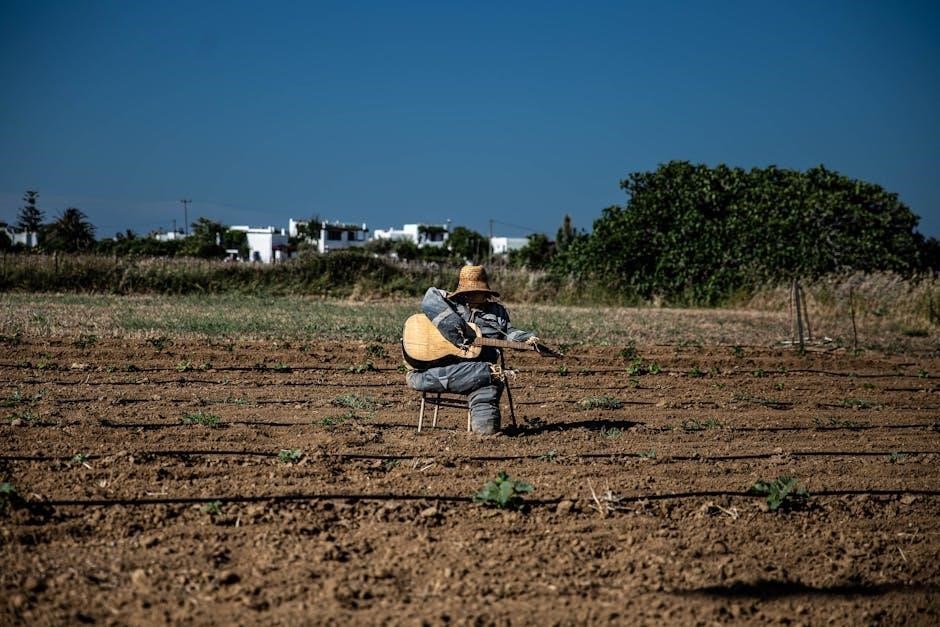
Methods of Manual Irrigation
Manual irrigation involves various techniques for delivering water to plants․ These methods range from simple watering cans to more elaborate systems using hoses‚ porous pots‚ and even repurposed bottles․ Each method has its advantages depending on scale‚ water availability‚ and crop type․
Watering Cans
Watering cans represent a fundamental tool in manual irrigation‚ offering a simple and direct method for delivering water to plants․ Their portability allows for targeted watering‚ reducing water waste by focusing solely on the root zone․ This is particularly beneficial in small gardens or areas with water scarcity․ The rose attachment‚ a sprinkler-like nozzle‚ provides a gentle shower‚ preventing soil erosion and seedling damage․
Watering cans come in various sizes and materials‚ catering to different needs and preferences․ Plastic cans are lightweight and durable‚ while metal cans offer longevity and a classic aesthetic․ The choice depends on the user’s physical strength and the scale of irrigation required․ Ergonomic designs with comfortable handles and balanced weight distribution minimize strain during prolonged use․
Regular cleaning of watering cans is essential to prevent clogging and maintain optimal water flow․ Storing them upside down when not in use prevents algae growth and extends their lifespan․ Watering cans are an accessible and affordable solution for manual irrigation‚ empowering gardeners to nurture their plants effectively․
Hoses and Nozzles
Hoses and nozzles are indispensable tools in manual irrigation‚ extending reach and providing adjustable water flow․ They offer a convenient way to deliver water to plants that are farther from the water source․ Hoses come in various lengths and diameters‚ catering to different garden sizes and water pressure requirements․ The choice of hose material‚ such as rubber or vinyl‚ affects its durability and flexibility․
Nozzles attach to the end of the hose‚ allowing users to control the water stream․ Adjustable nozzles offer a range of spray patterns‚ from a gentle mist for delicate plants to a powerful jet for thorough watering․ Spray patterns can be adjusted for the watering of specific plants․ Some nozzles have shut-off valves‚ preventing water waste when moving between plants․
Proper hose storage is crucial to prevent kinks and damage․ Hose reels or hangers keep hoses organized and extend their lifespan․ Regular inspection of hoses and nozzles for leaks ensures efficient water use․ Hoses and nozzles are a versatile solution for manual irrigation‚ providing flexibility and control over water delivery․
Porous Pots and Ollas
Porous pots and ollas represent an ancient and efficient method of manual irrigation․ These unglazed clay vessels are buried in the soil‚ near plant roots‚ and filled with water․ The porous nature of the clay allows water to slowly seep into the surrounding soil‚ directly hydrating the root zone․ This minimizes water loss through evaporation and runoff‚ making it an environmentally friendly option․
Ollas come in various sizes‚ suitable for different plant types and soil conditions․ Their effectiveness is maximized in sandy or well-draining soils‚ where water readily diffuses․ The rate of water release depends on the clay’s porosity and the soil’s moisture content․
Refilling is done manually‚ typically every few days‚ depending on the climate and plant needs․ This system is particularly beneficial in arid regions‚ conserving precious water resources․ Because the porous material waters the plants slowly‚ this avoids overwatering the plants․ Porous pots and ollas provide a sustainable and low-maintenance solution for targeted water delivery in manual irrigation systems‚ reducing water waste and promoting healthy plant growth․
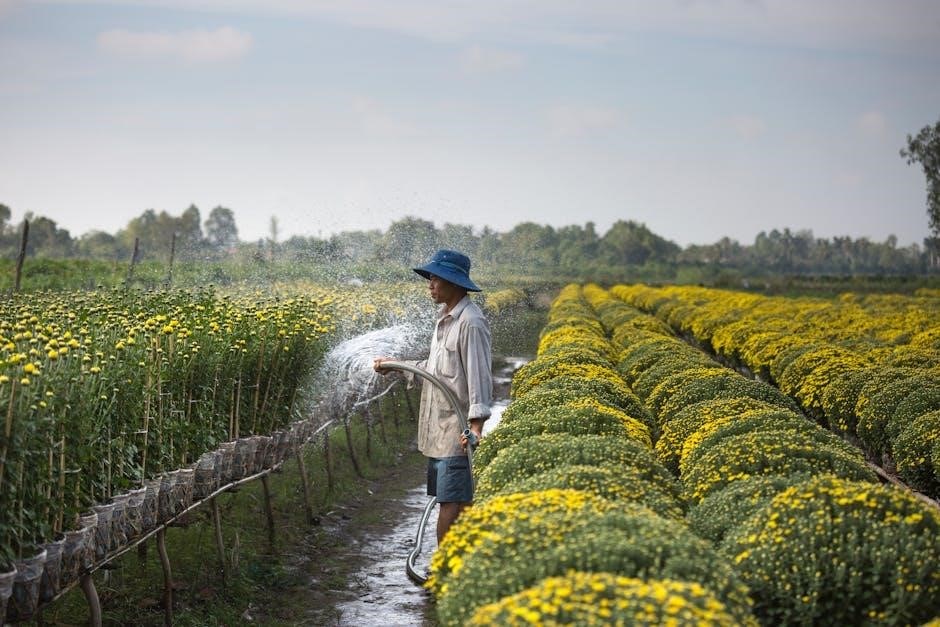
Bottles and Perforated Pipes
Bottles and perforated pipes offer a simple‚ cost-effective approach to manual irrigation‚ particularly useful for small gardens and individual plants․ This method involves using recycled plastic bottles or PVC pipes with small holes drilled along their length․ The bottles are typically buried near the plant’s root zone‚ with the neck exposed for refilling․ Similarly‚ perforated pipes can be laid along rows of plants‚ providing a linear irrigation system․
When filled with water‚ these containers slowly release moisture through the perforations‚ directly targeting the roots․ This reduces water waste from evaporation and surface runoff‚ maximizing efficiency․ The release rate can be adjusted by altering the size and spacing of the holes․
This DIY irrigation technique is easily adaptable to various plant sizes and arrangements․ It is very labor intensive and time-consuming‚ since you have to move water manually․ Regular monitoring is necessary to ensure consistent water distribution․ Bottles and perforated pipes provide an accessible and sustainable option for delivering water directly to plant roots in manual irrigation systems‚ promoting water conservation and healthy plant growth․
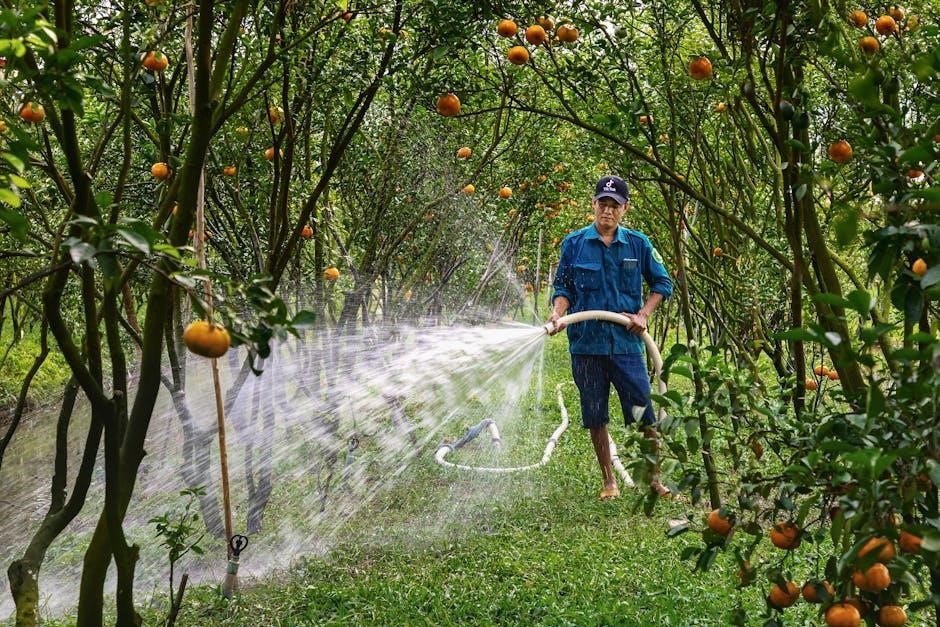
Advantages and Disadvantages
Manual irrigation offers benefits like low cost and simplicity‚ but it also presents drawbacks․ It is labor-intensive and can be inefficient compared to automated systems․ Understanding these advantages and disadvantages helps determine its suitability for specific agricultural or gardening contexts․
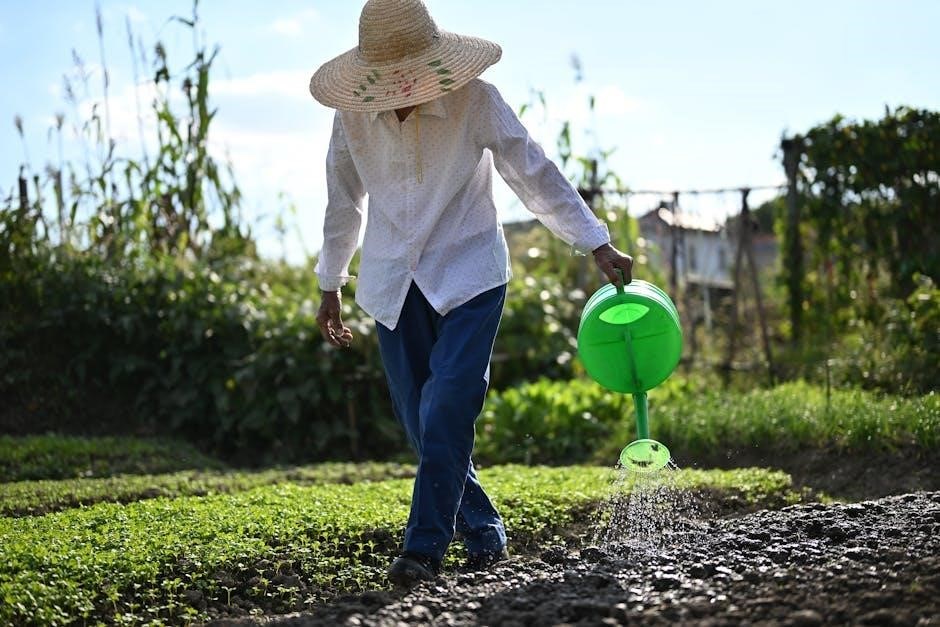
Advantages of Manual Irrigation
Manual irrigation‚ despite its labor intensity‚ offers several notable advantages‚ particularly for small-scale operations and specific environments․ One of the primary benefits is its low initial cost․ Unlike automated systems that require significant investment in equipment and infrastructure‚ manual irrigation primarily relies on simple tools such as watering cans and hoses‚ making it accessible to farmers with limited resources․
Another key advantage is the direct control it provides over water application․ Farmers can precisely target water to individual plants‚ ensuring that each receives the necessary hydration․ This precision minimizes water wastage‚ which is particularly crucial in arid climates or regions with water scarcity․ Furthermore‚ manual irrigation allows for close monitoring of plant health․ Observing plants during watering facilitates early detection of diseases‚ pests‚ or nutrient deficiencies‚ enabling timely intervention․
Moreover‚ manual irrigation systems are relatively easy to maintain and repair․ The absence of complex machinery means that troubleshooting and fixing issues can often be done with basic tools and local knowledge․ This self-reliance is especially valuable in remote areas where access to specialized technicians may be limited․ Finally‚ manual irrigation creates opportunities for employment and community engagement‚ fostering a sense of ownership and responsibility for water resource management․
Disadvantages of Manual Irrigation
While manual irrigation offers certain benefits‚ it also presents several significant disadvantages‚ particularly concerning efficiency and labor requirements․ The most prominent drawback is its high labor intensity․ Manually watering crops is a time-consuming and physically demanding task‚ especially for large areas․ This can be a major constraint for farmers with limited manpower or those seeking to optimize their productivity․
Another significant disadvantage is the potential for inconsistent water application․ Unlike automated systems that deliver precise and uniform amounts of water‚ manual irrigation relies on human judgment‚ which can vary depending on factors such as fatigue‚ skill level‚ and attention span․ This inconsistency can lead to overwatering in some areas and underwatering in others‚ resulting in uneven crop growth and reduced yields․
Furthermore‚ manual irrigation is generally less water-efficient than modern methods like drip irrigation․ A significant portion of the water applied manually can be lost through evaporation‚ runoff‚ or uneven distribution‚ especially when using sprinklers or hoses without careful management․ This inefficiency can be particularly problematic in arid regions where water resources are scarce․ Finally‚ manual irrigation is often limited to smaller areas due to the practical constraints of labor and time․ Scaling up irrigation efforts manually can be challenging and may not be economically feasible for large-scale farming operations․
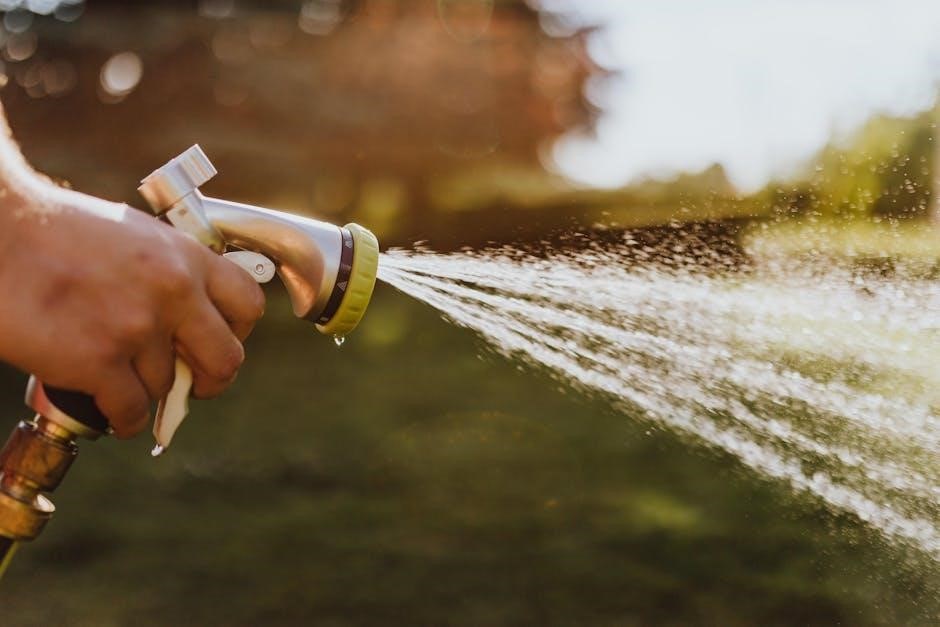
Applications of Manual Irrigation
Manual irrigation finds its niche in various scenarios․ It’s suitable for small-scale farming‚ backyard gardening‚ and arid climates․ Traditional drip and watering can methods are common․ It offers a simple‚ effective solution for localized water delivery where resources are limited․
Small-Scale Farming
Manual irrigation plays a significant role in small-scale farming operations‚ particularly in regions where advanced irrigation technologies are either unaffordable or impractical․ For many small farmers‚ hand-watering with watering cans or hoses represents the most accessible and manageable way to provide water to their crops․
This method allows for precise control over water distribution‚ ensuring that each plant receives the necessary moisture․ It’s especially beneficial for farmers cultivating diverse crops or managing small plots with varying water requirements․ Manual irrigation also fosters a closer connection between the farmer and their plants‚ enabling them to observe plant health and adjust watering practices accordingly․
Furthermore‚ manual irrigation offers flexibility in adapting to changing weather conditions and crop needs․ Farmers can easily modify the frequency and amount of water applied based on rainfall patterns‚ temperature fluctuations‚ and the growth stages of their crops․ While labor-intensive‚ manual irrigation empowers small-scale farmers to optimize water usage and maximize yields‚ contributing to food security and sustainable agriculture in their communities․ Common manual irrigation techniques include watering cans‚ porous pots‚ bottles‚ and perforated pipes․
Backyard Gardening
Manual irrigation is exceptionally well-suited for backyard gardening‚ offering a practical and personalized approach to watering plants․ For home gardeners‚ the scale of the operation is typically small enough to make hand-watering manageable and even enjoyable․ This method allows for close observation of individual plants‚ enabling gardeners to identify signs of stress or disease early on․
Using watering cans or hoses‚ gardeners can target specific areas and plants‚ ensuring that each receives the appropriate amount of water․ This is especially useful for gardens with mixed plantings‚ where different species have varying water needs․ Manual irrigation also minimizes water waste‚ as gardeners can directly apply water to the soil around the roots‚ reducing evaporation and runoff;
Moreover‚ the act of manual irrigation can be a therapeutic and mindful activity‚ providing a connection to nature and a sense of accomplishment․ It allows gardeners to nurture their plants with care and attention‚ fostering a deeper appreciation for the growing process․ Common manual irrigation techniques include watering cans‚ porous pots‚ bottles‚ and perforated pipes that slowly release water into the soil near plant roots‚ making it a sustainable option․
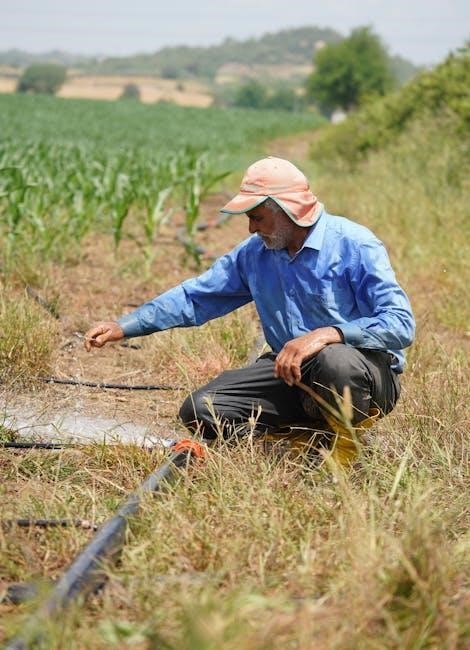
Irrigation in Arid Climates
In arid climates‚ where water scarcity is a significant challenge‚ manual irrigation presents a viable solution for small-scale agriculture and home gardening․ While large-scale automated systems may be impractical or unaffordable‚ manual methods allow for precise water application‚ minimizing waste and maximizing efficiency․ This targeted approach is crucial in regions where every drop of water counts;
Techniques like using watering cans‚ porous pots‚ and ollas are particularly effective in arid conditions․ Porous pots and ollas‚ buried in the soil near plant roots‚ slowly release water‚ reducing evaporation and delivering moisture directly where it’s needed․ This method is ideal for conserving water and ensuring plants receive consistent hydration‚ even during prolonged dry periods․
Manual irrigation also allows for careful monitoring of soil moisture levels․ Gardeners can adjust watering schedules based on the specific needs of their plants and the prevailing weather conditions․ By observing how plants respond to irrigation‚ they can fine-tune their approach to optimize water use and promote healthy growth․ This hands-on method is appropriate for small-scale farming or backyard gardening irrigation in dry and arid climates․
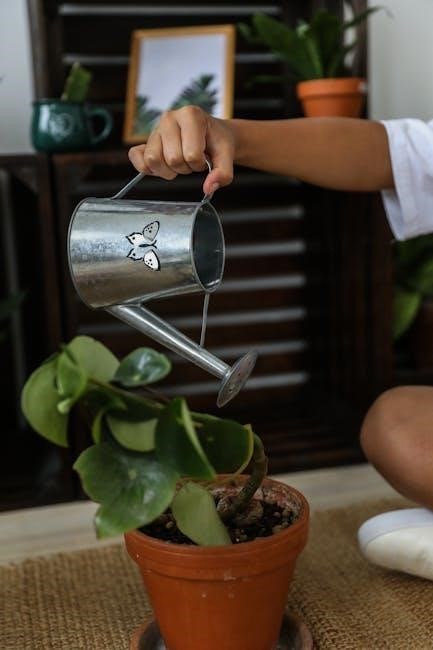
Efficiency Considerations
Optimizing manual irrigation requires careful water management techniques․ Efficient methods‚ like using porous pots and targeted watering‚ minimize water waste․ Understanding soil moisture levels and plant needs is crucial․ Effective strategies enhance water use‚ especially in water-scarce regions‚ promoting sustainable practices․
Water Management Techniques
Effective water management techniques are crucial for maximizing the efficiency of manual irrigation systems․ One key strategy involves understanding soil types and their water-holding capacities․ Sandy soils require more frequent‚ lighter watering‚ while clay soils retain water for longer periods‚ demanding less frequent applications․
Monitoring soil moisture levels is essential․ Simple tools like soil moisture meters or even the “feel” method can help determine when and how much to irrigate․ Avoid overwatering‚ which can lead to root rot and nutrient leaching‚ and underwatering‚ which stresses plants and reduces yields․
Timing is also critical․ Watering in the early morning or late evening minimizes water loss through evaporation‚ allowing plants to absorb more moisture․ Grouping plants with similar water needs together ensures that each plant receives the appropriate amount of water․
Employing mulching techniques helps retain soil moisture by reducing evaporation and suppressing weed growth‚ which competes with plants for water․ Organic mulches like straw‚ wood chips‚ or compost also improve soil structure and fertility over time․
Finally‚ consider using rainwater harvesting systems to supplement your water supply․ Collecting rainwater reduces reliance on municipal water sources and provides a sustainable source of irrigation water․
Optimizing Water Usage in Manual Irrigation
Optimizing water usage in manual irrigation is paramount for sustainability and resource conservation․ One effective method is targeted watering‚ focusing water directly at the plant’s root zone rather than broadly spraying the entire area․ This minimizes water loss through evaporation and runoff‚ ensuring that the plant receives the maximum benefit․
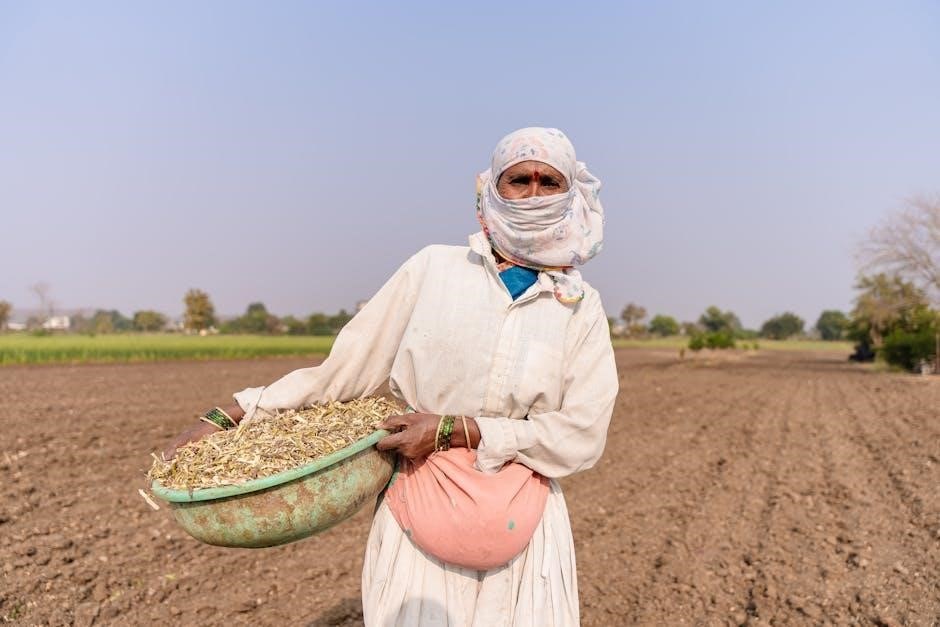
Using appropriate watering tools is also crucial․ Watering cans with roses or adjustable nozzles allow for gentle‚ even distribution of water‚ preventing soil erosion and minimizing water wastage․ Hoses with adjustable spray patterns can be adapted to different plant sizes and watering needs․
Consider implementing a schedule based on plant needs and weather conditions․ Avoid watering on rainy days or during periods of high humidity․ Adjust watering frequency and volume according to the plant’s growth stage‚ with seedlings requiring more frequent watering than mature plants․
Improve soil health through the addition of organic matter‚ such as compost or well-rotted manure․ Organic matter increases the soil’s water-holding capacity‚ reducing the need for frequent irrigation․ Regularly monitor plants for signs of water stress‚ such as wilting or yellowing leaves‚ and adjust watering accordingly․
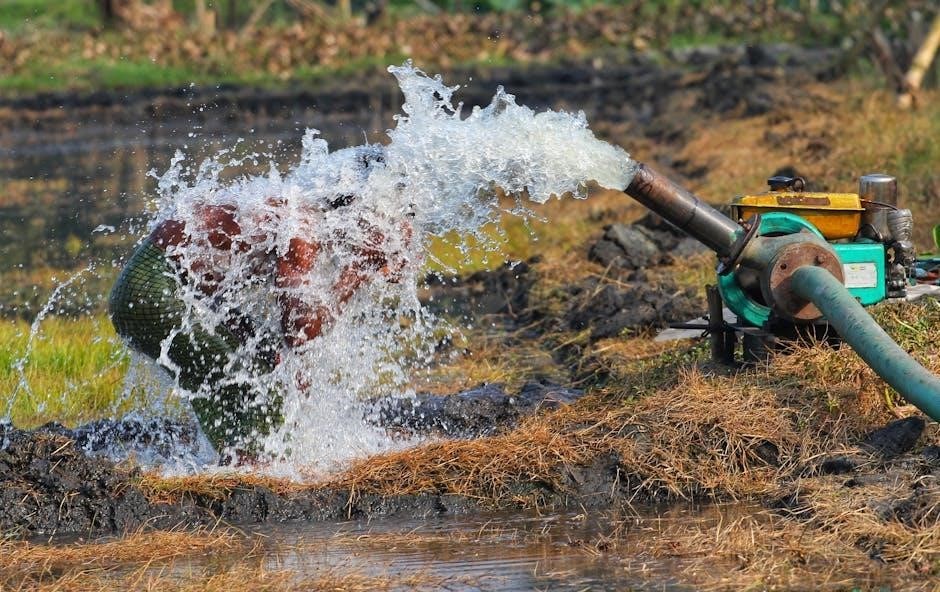
By implementing these strategies‚ you can significantly reduce water consumption while maintaining healthy and productive plants in your manually irrigated garden or farm․